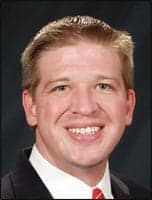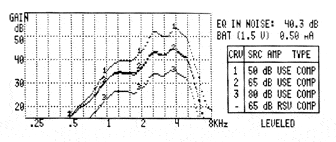
In the late 70s, the English science historian James Burke hosted an addictive PBS series called Connections: An Alternate View of Change (you can now watch many of these episodes on YouTube, with the first show located at www.youtube.com/watch?v=OcSxL8GUn-g). The series presents a kind of herky-jerky whirlwind tour of technological development and history. The point of Connections is that science and technology build upon themselves, brick by brick, discovery by discovery. But for science to build on itself, it must be somehow relayed or recorded. In this respect, the researchers and clinicians who contribute to HR and other journals are doing us all a huge service by taking the time to disseminate their knowledge, and smoothing the path for everyone—present and future.
Dissemination as a noble tradition. I recently learned how archaeologists in Africa discovered what is thought to be a 75,000-year-old calendar site (think Stonehenge, except 70,000 years older). This configuration of stones in a field would predate the first known pieces of pottery by some 40,000 years. I thought it was particularly interesting that the archaeologists said the aligned stones operate by using the very same celestial movements used by Stonehenge and the Great Pyramids. And they say this is probably no coincidence; this vital information used for gathering harvests, etc, was passed along through hundreds of generations.
Knowledge also gets lost and must be painstakingly rediscovered. Even the written word isn’t always indelible. Julius Caesar thought he was pretty smart when setting his own ships afire in Alexandria, but unfortunately he also burned down the Great Library and much of the recorded intellectual ideas of the times. I recently read about the Antikythera Mechanism, an astronomical clock created about 150-100 BC, containing some 30 to 72 gears that accurately predicted the positions of the sun, moon, and other planets. It is so advanced that initial scientific investigations into the device drew only disbelief; it’s essentially the world’s first analog computer. It would take another 1,400 years for other similar geared devices to be “rediscovered.” Nikola Tesla, Buckminster Fuller, and others had futuristic ideas that even today have not been successfully realized.
Hearing science and technology. In hearing care, we’ve also seen incredible progress—as well as some “lost technologies” that eventually re-emerged to become prominent features in today’s products. For example, in 1984, David Hawkins and William Yacullo wrote a definitive paper on the usefulness of directional microphone systems. However, probably because early directional aids didn’t employ an omnidirectional switch, the technology mostly gathered dust until the early 90s. Today, directional mics come “standard” on most styles that can accommodate them.
Another example might be the late John Victoreen who in the 1960s advocated for loudness-based fitting protocols (see Terry Griffing’s article “Victoreen Was Right” in the August 1996 HR). Here’s what Victoreen wrote in 1970:
Equally plotted loudness functions, when suitably measured and plotted, should provide an excellent method of visualizing some of the dynamic properties of the ear. This might prove useful in analyzing the sound pressure versus loudness characteristics of the defective ear, as would be required in the prescribing of a prosthetic device.
Sounds like he could have been a member of the IHAFF committee. The list goes on and on: Mead Killion advocated for the usefulness of broad bandwidths in the mid-1970s and later, with Bill Cole, developed a multiband compressor called the K-Amp; a patent for a BTE•CIC hybrid device developed by Rexton in the early 1990s was purchased by Sebotek, which then modified the design to introduce the first commercially available RIC; the open-vent concept was used by several companies, but the success of ReSoundAir made everyone take notice.
So what other “scary-good” hearing technologies are lurking out there, waiting to be discovered or rediscovered? It’s an interesting question, and one that I’ll take a stab at in next month’s HR.
Karl Strom
Editor-In-Chief





